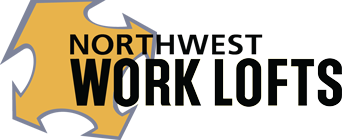BOMA Seattle King County: Defining Best Practices and Standards in Office Space Management
The Building Owners and Managers Association (BOMA) Seattle King County plays a crucial role in setting standards and best practices for office space management in the region. This organization helps ensure that office environments are not only efficient but also sustainable and compliant with local regulations. BOMA’s guidelines are essential for maintaining high standards in property management, providing key insights on effective space utilization, energy efficiency, and tenant satisfaction.
Office space management has become increasingly complex, with new trends in remote work and technological advancements. BOMA Seattle King County offers valuable resources and networking opportunities for property managers to stay ahead of these changes. Their standards emphasize the importance of proactive maintenance, strategic planning, and fostering strong tenant relationships.
By adhering to BOMA’s best practices, office managers can create more productive and enjoyable workplaces. This not only benefits the tenants but also enhances the overall value of the properties. Property owners and managers who follow BOMA’s guidelines are better positioned to navigate the evolving landscape of office space management.
BOMA Seattle King County’s Role
BOMA Seattle King County serves a critical function in guiding property owners and managers through best practices in office space management. It achieves this through robust advocacy efforts and a strong focus on education and professional development for its members.
Advocacy and Influence
BOMA Seattle King County actively represents the interests of property owners and managers at local, state, and federal levels. It influences policy decisions and regulations that impact the commercial real estate sector.
Regular participation in legislative sessions ensures that member concerns about taxation, zoning, and environmental regulations are voiced. Stakeholder meetings facilitate direct communication with policymakers.
BOMA also collaborates with government agencies to develop and implement standards that promote sustainable building practices. This advocacy helps create a favorable business environment and enhances the value of commercial properties in the region.
Education and Professional Development
BOMA Seattle King County prioritizes the professional growth of its members through a variety of educational programs. It offers certifications, workshops, and seminars aimed at improving skills in property management, sustainability, and regulatory compliance.
Courses like the Real Property Administrator (RPA) and Facilities Management Administrator (FMA) credentials are highly regarded. Networking events and online resources provide continuous learning opportunities.
These programs not only enhance individual competencies but also ensure that industry standards are met. BOMA’s commitment to education fosters a well-informed community capable of navigating the complexities of commercial real estate management.
Best Practices for Office Space Management
Effective office space management in Seattle hinges on efficiency, sustainability, and preparedness. Each of these practices plays a key role in ensuring optimal office function and safety.
Operational Efficiency
Operational efficiency involves streamlining processes and utilizing resources to their fullest potential. This includes deploying technologies to automate routine tasks and using space planning software to maximize office usage.
Regular maintenance schedules and clear protocols for addressing issues can minimize downtime. It’s important to train staff on best practices and maintain open communication channels to ensure smooth operations.
Sustainability Standards
Sustainability standards focus on reducing the environmental footprint of office buildings. This can be achieved through energy-efficient lighting, HVAC systems, and water-saving fixtures.
Implementing recycling programs and utilizing eco-friendly materials in office furnishing are also key components. Regular audits and certifications like LEED can help maintain these standards and demonstrate commitment to the environment.
Emergency Preparedness
Emergency preparedness ensures the safety and security of building occupants. This includes having an updated emergency response plan that is regularly reviewed and practiced.
Equipping the office with first aid kits, AEDs, and emergency communication systems is essential. Training employees on evacuation procedures and conducting regular drills can enhance readiness and response in actual emergencies.
